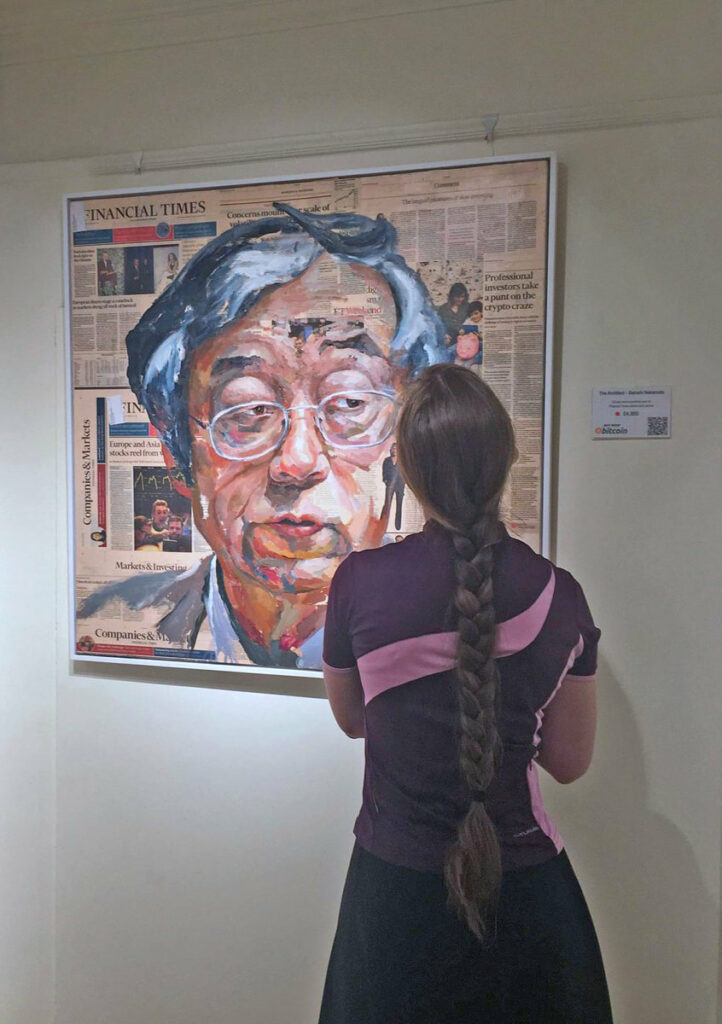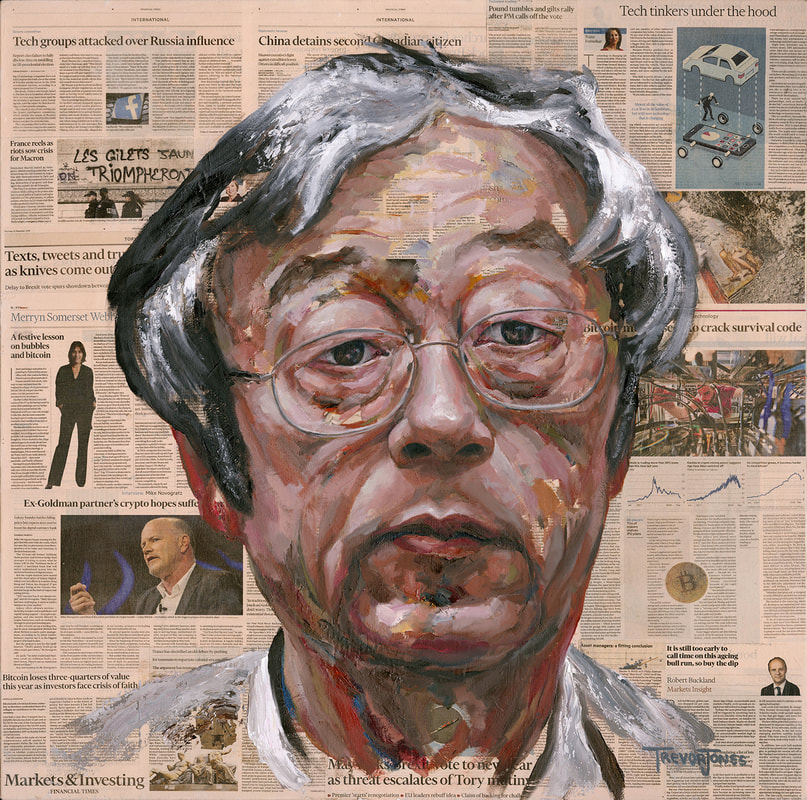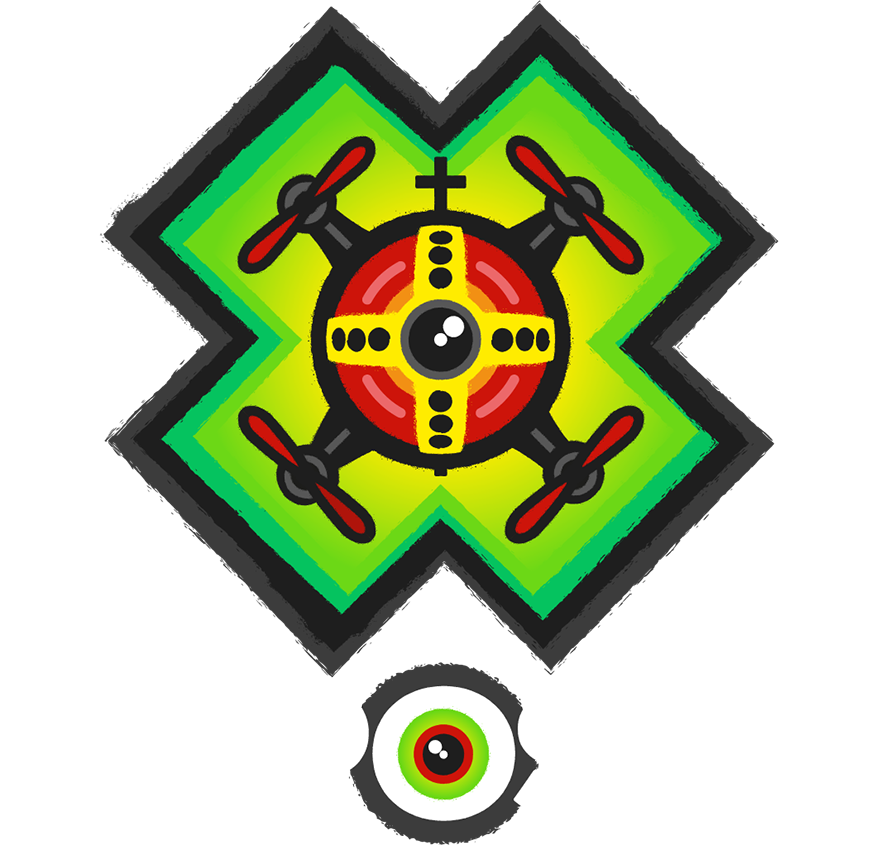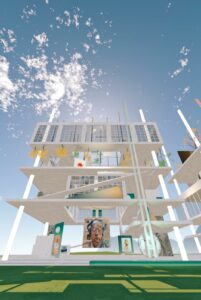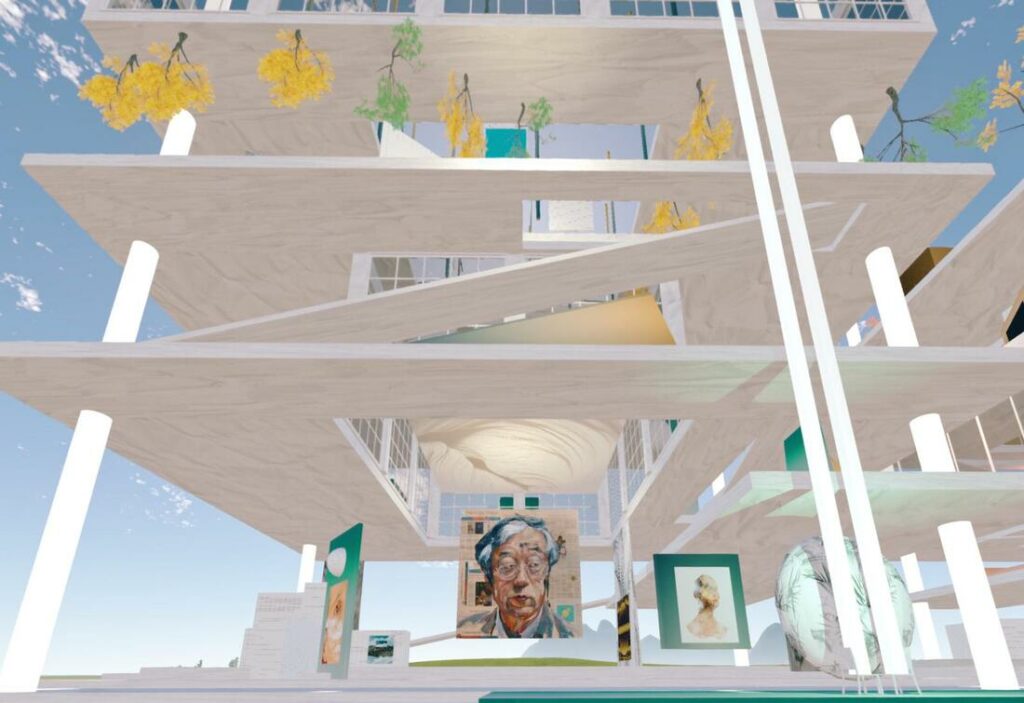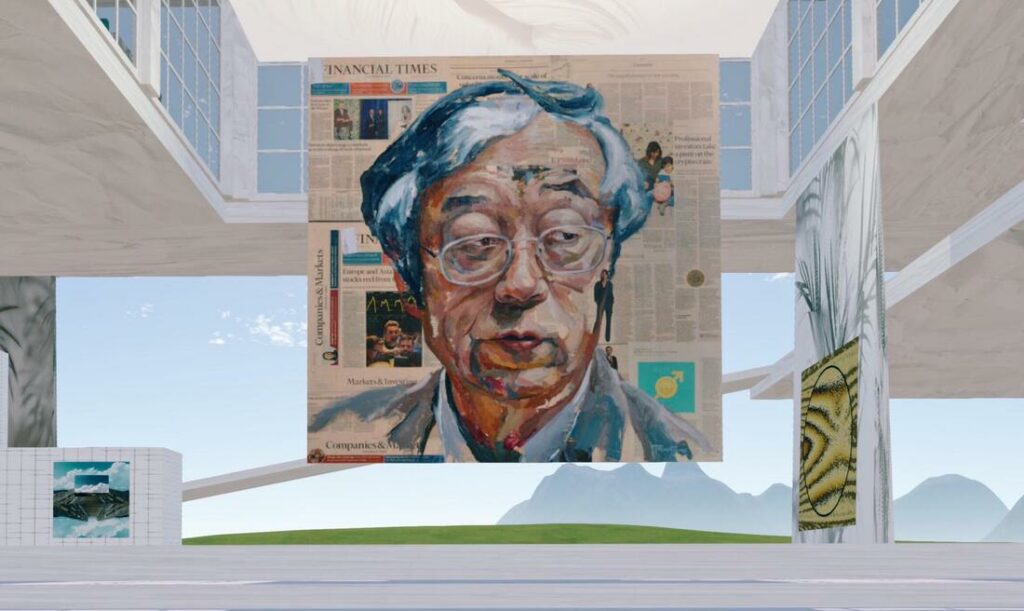The Architect – Satoshi Nakamoto
In late 2019, I was involved in several conversations in the Web3 art space about the market value of a physical work versus the value of an NFT created from the physical. Opinions varied regarding which was believed to have more value, or should have; however, one view was strongly held by all: that society’s perception of digital/NFT art will shift, and its value, particularly for key pieces, would increase dramatically in the coming years. We really had no idea just how real this was going to get!
These conversations sparked an idea, a kind of experiment. I decided to mint an NFT of one of the twelve paintings from my 2018 ‘Crypto Disruption’ solo exhibition to see if in fact someone would value the digital over the physical artwork. So, on January 29th, 2020, I tokenized my most well-known and iconic artwork since entering the crypto art scene: The Architect – Satoshi Nakamoto.
A few days later in early February someone bid a very respectable 11 Eth for the NFT. However, at the time this was less than half the sale price of the original painting, so I opted not to accept it. Then, on the 16th of June, 2020, Pablo and Colborn of the @MuseumofCrypto (MoCA) placed a bid of 27.5 Eth, which very interestingly, made the NFT slightly more expensive than the original £4,950 ($6,250 USD) sale of the painting. Of course, I accepted this offer. The experiment was complete. The artwork was transferred on April 11th to Pablo’s RFC_ART collection.
Below: Satoshi displayed centre stage in the virtual reality museum in Somnium Space.
Why is this portrait special?
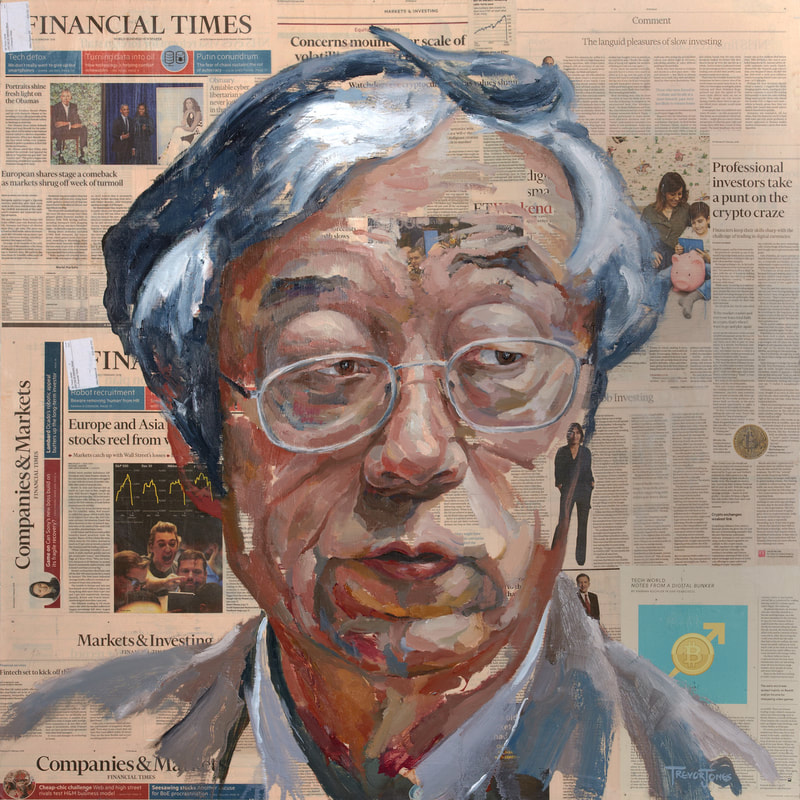
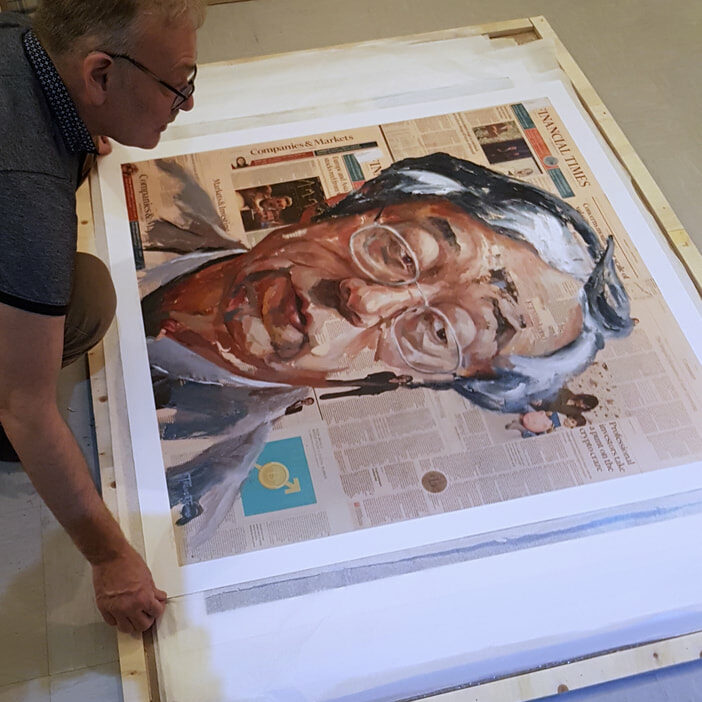
‘The Architect – Satoshi Nakamoto’ is the painting that put me on the cryptocurrency map, so to speak. The public engagement with this piece since I first posted it online in June 2018 has been overwhelming, and for some reason, ‘Satoshi’, even more than my portrait of John McAfee has captured imaginations.
I was a little surprised that three months before the solo show even opened, the painting sold for the list price of £4,950, or about 1 Bitcoin at the time. The buyer spotted it on Twitter and contacted me to inquire about it. It was the first painting of the exhibition to sell, and it was even more special as it was the very first artwork I’d ever sold for Bitcoin. ‘Satoshi’ is a pivotal and meaningful work of art in my art career to date, and that’s why I chose it for the NFT.
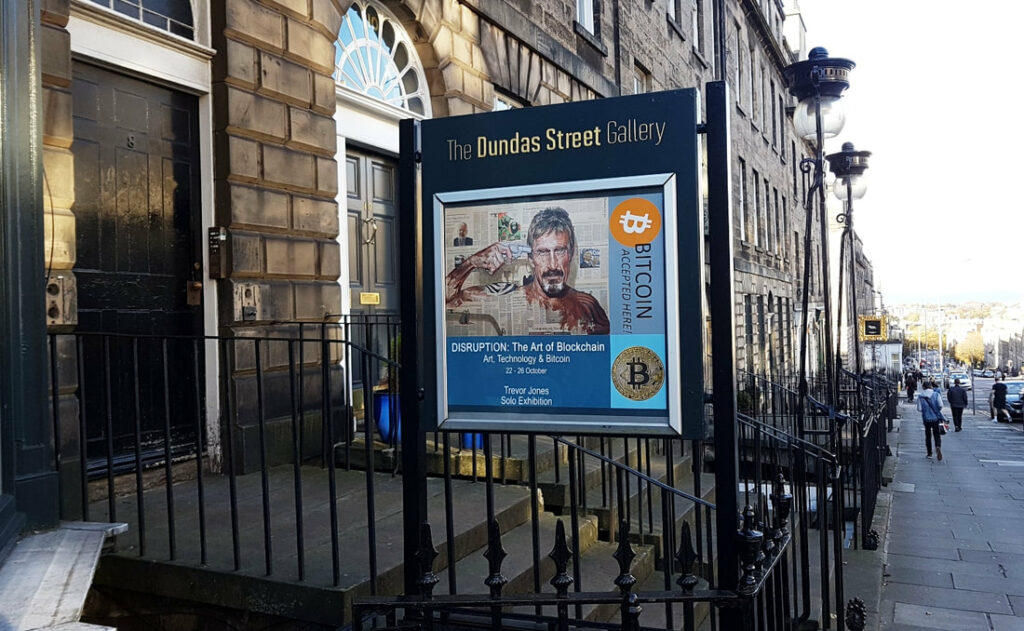
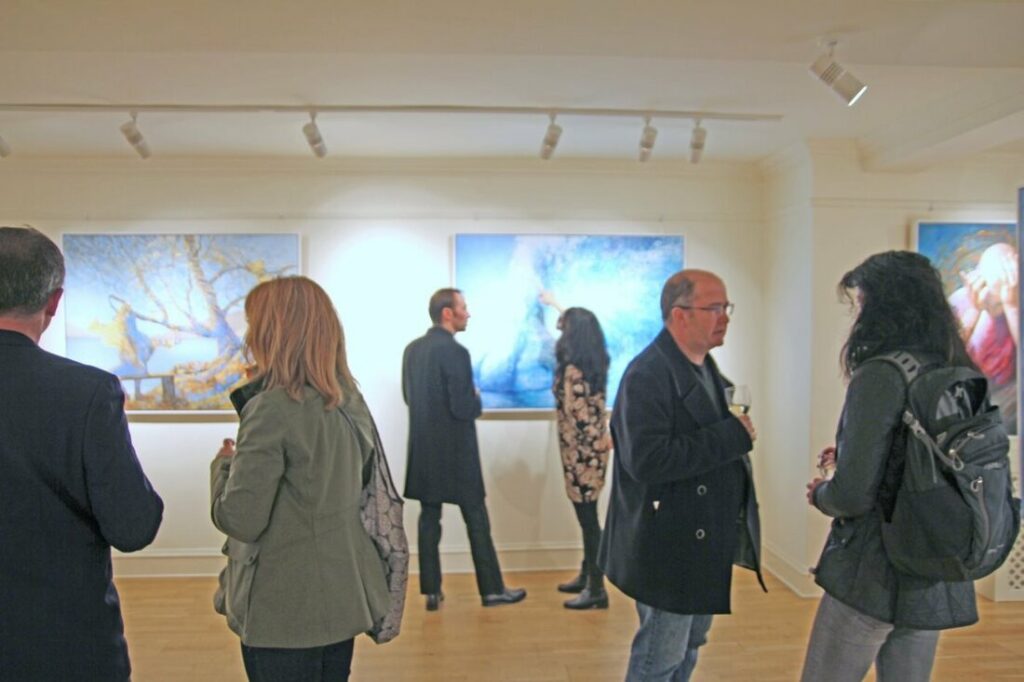
Around the World and Back
‘The Architect – Satoshi’ has been written about and the image used in many publications, including bitcoin.com, Financial Times, BreakerMag, and CoinRivet. I’ve even discovered it being used without artist credit in a number of online articles, which is frustrating but also a great example of just how popular this work is.
In November 2019, someone (I’m not going to say who) photographed the artwork ‘Satoshi’, tokenized it and listed it on OpenSea. I didn’t take the theft of my artwork well, understandably. I tweeted about it, which ended up kicking off a massive online debate, sparking heated arguments, and generating articles and blog posts about this new ‘Wild West’ digital art world and the problem of art theft and copyright issues in Web3 marketplaces. OpenSea contacted me and they removed the fake NFT immediately. Shortly after, other marketplaces like SuperRare and KnownOrigin also began to make a more conscious effort to educate their artists about what is and is not acceptable.
‘Satoshi’ does have a way of sparking conversation. The artwork has been seen both physically and digitally at conferences in Britain, the USA, and China, and limited edition prints have been sent around the world to countries including Australia, Belgium, Greece, Germany, France, Switzerland, the USA, and Canada. The image was used on the cover of the UK magazine Affluent Lifestyle, which can be found in most UK airport business lounges and is also delivered directly to UK homes with a minimum value of £1 million.
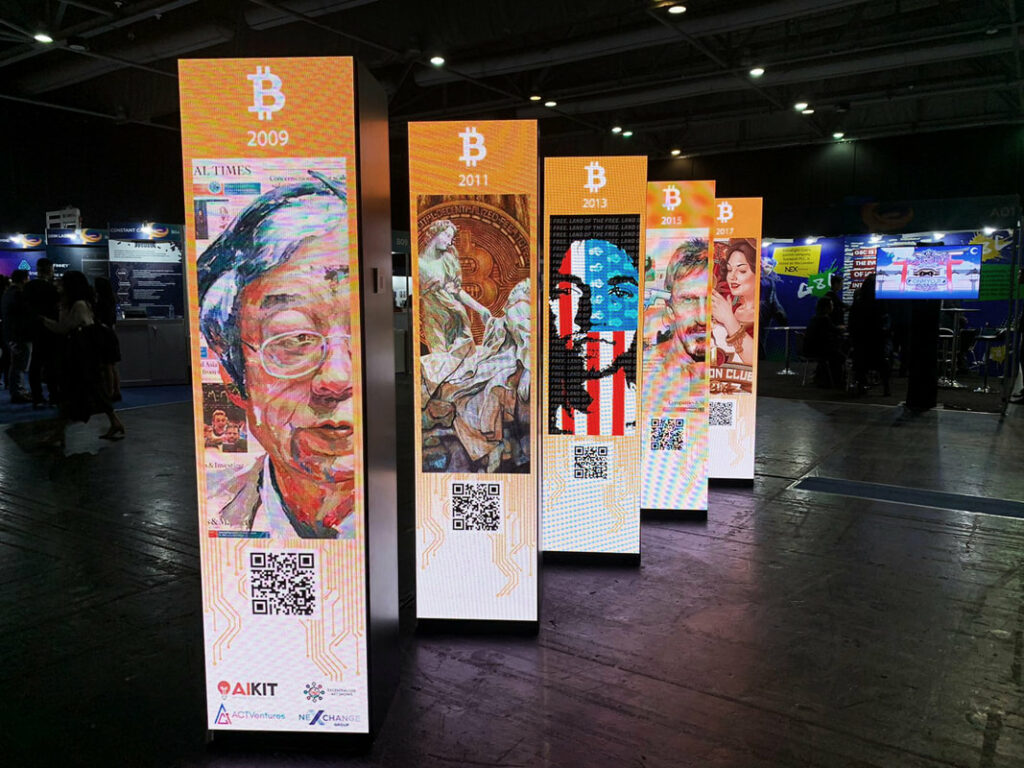
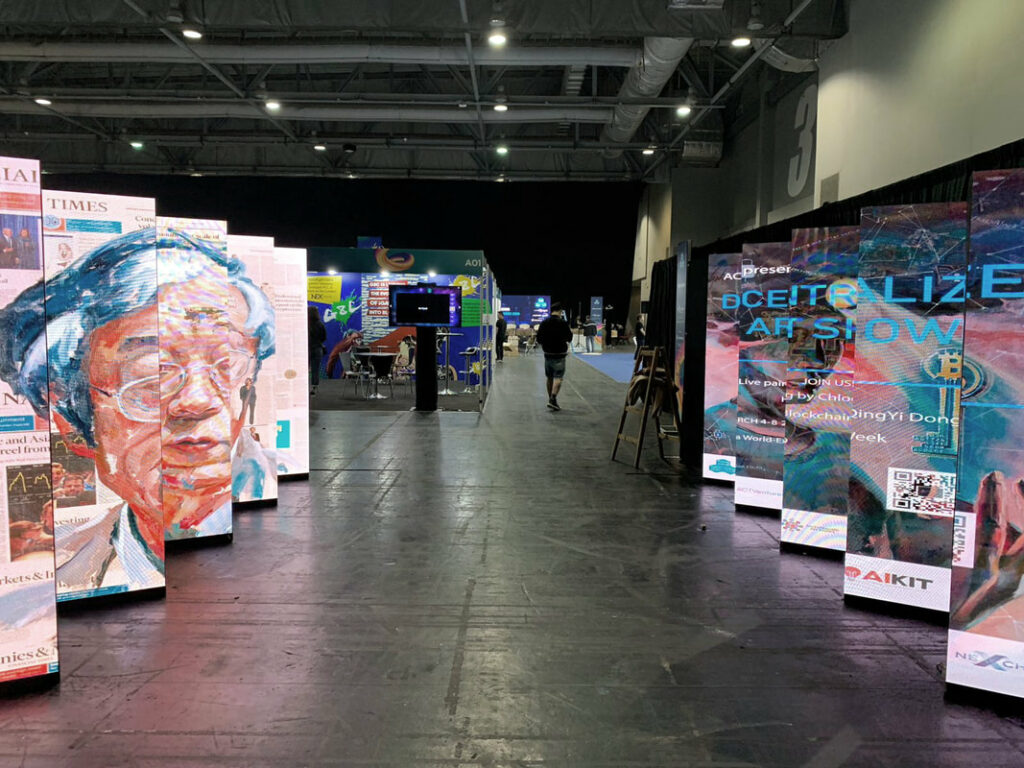
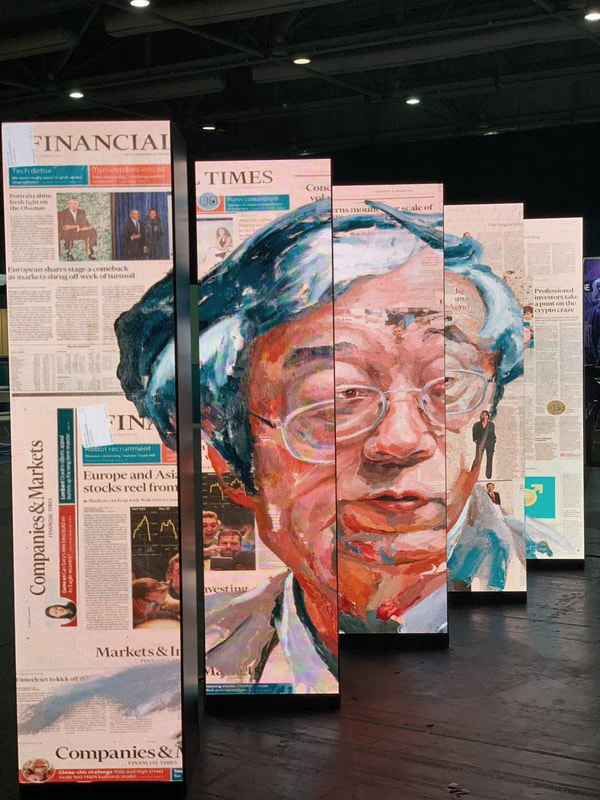
Mass Adoption
‘Satoshi’ has been seen by an enormous number of people around the globe, and it’s quite likely that many of them knew very little about cryptocurrency. My goal as an artist, whose work will continue to focus on this exciting technology and the people involved in the space, is to eventually cross back over to the traditional art market. I know this will only be a matter of time. Moreover, we all talk about how crypto art can be a vehicle to help drive mass adoption; I’m confident that my art, particularly paintings like ‘Satoshi’, will help play a role in this.
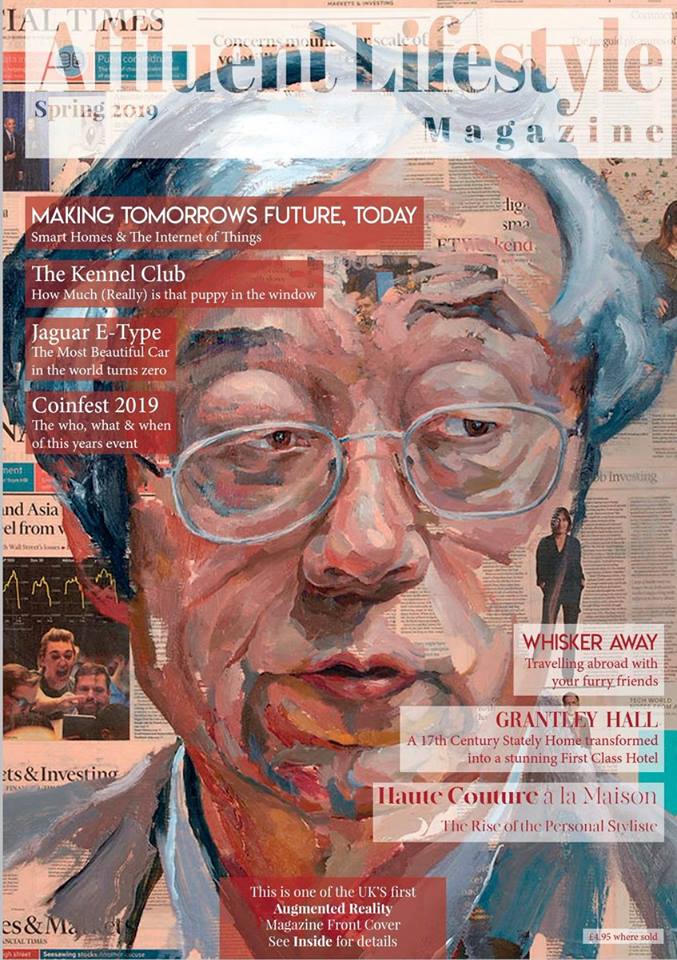
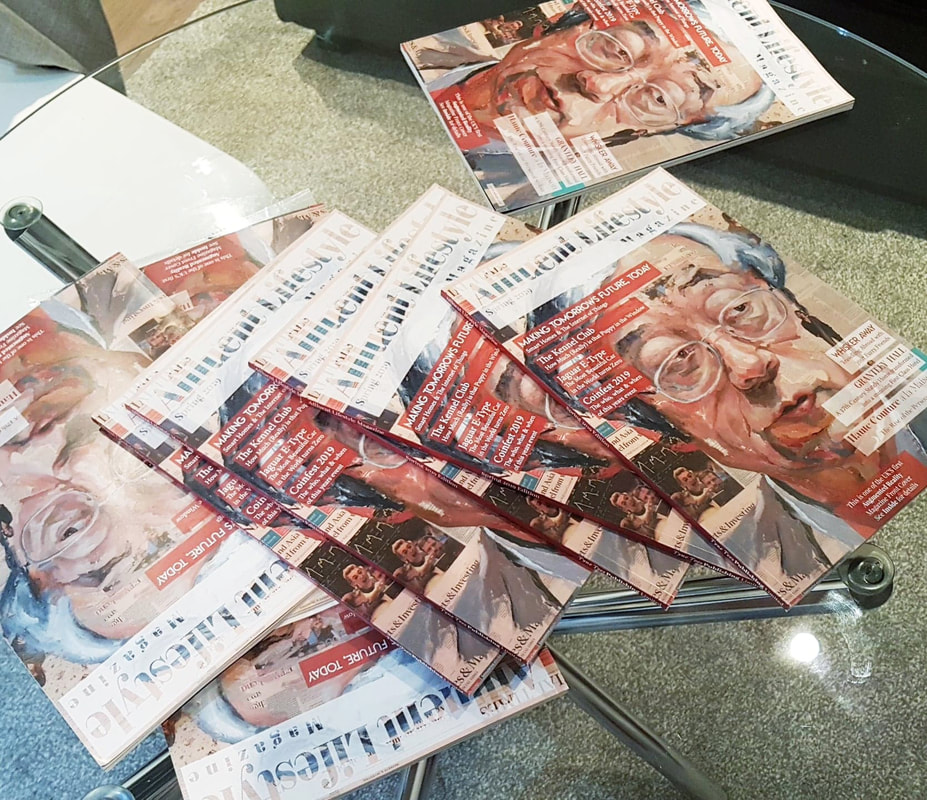
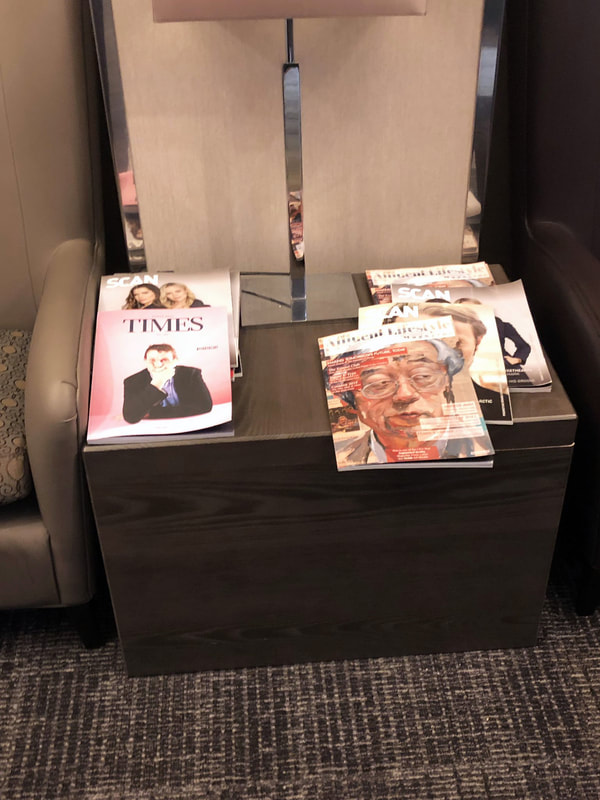
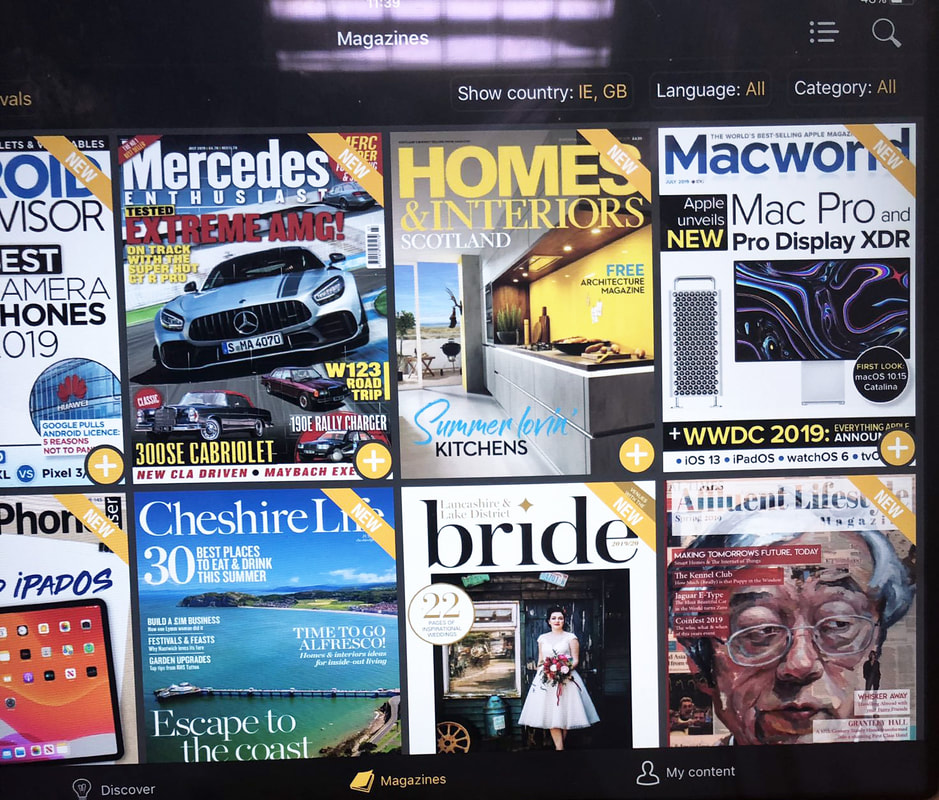
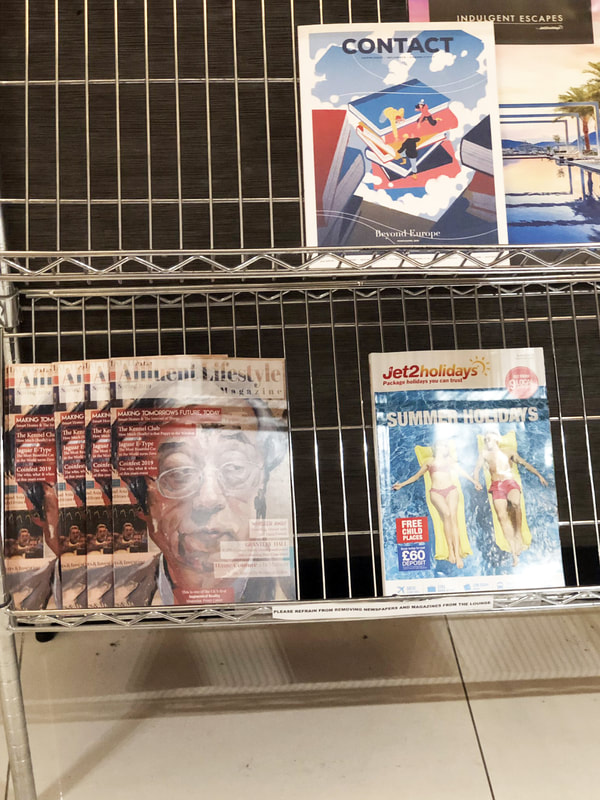
Satoshi and Serendipity
On October 26th, 2018, the very last day of my Crypto Disruption exhibition, a visitor walked into the gallery to view the paintings. She told me she knew nothing about bitcoin but recognized the woman in the Financial Times article in the ‘Satoshi’ portrait as Merryn Somerset Webb, the editor-in-chief of Moneyweek and FT columnist. She mentioned that Merryn lived here in Edinburgh, just down the road from the gallery. I had no idea at the time who Merryn was, as I didn’t read the FT until I subscribed to it to gather bitcoin articles for my artwork. This was an amazing coincidence! So, I searched for Merryn on Twitter, tagged her in a tweet, and invited her to the exhibition. Unfortunately, she couldn’t make it before the gallery closed that evening, but the next week she visited my studio to see the painting. She liked it so much that she bought a large print for her office, and about a month later she wrote an article for the Financial Times beginning with a mention of the artwork.
A few days later, someone from London saw Merryn’s tweet about ‘Satoshi’ and contacted me to commission a similar portrait of the same dimensions. Interestingly, this buyer was not involved in any way with cryptocurrency or blockchain technology; she was in the banking sector and just really liked the painting. This all happened through absolutely amazing serendipity, and these are only a couple of examples attesting to the genuine interest and intrigue that people have with ‘The Architect – Satoshi Nakamoto’.
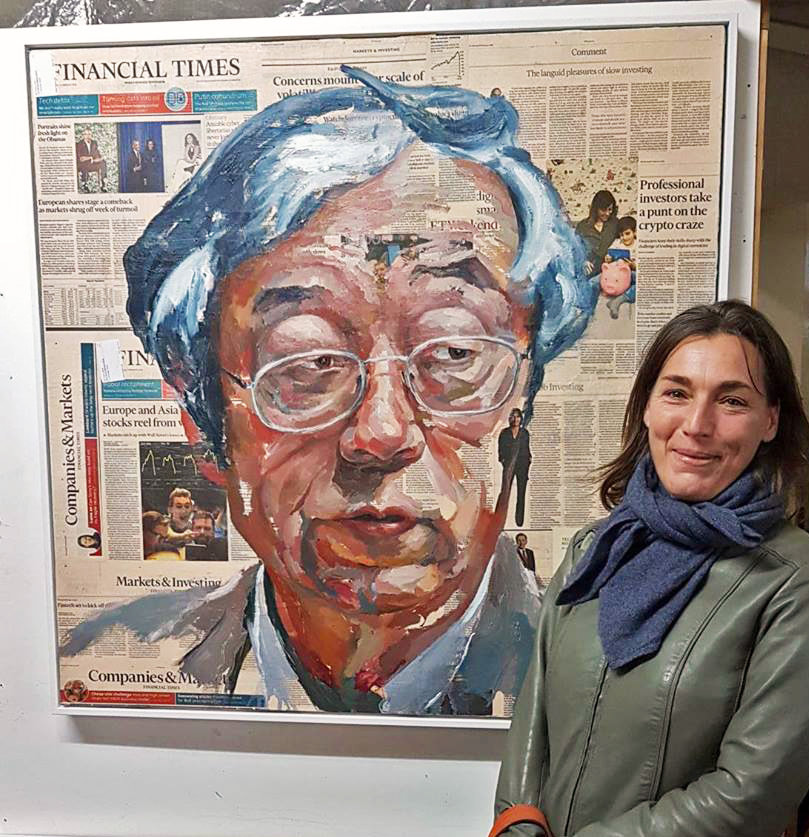
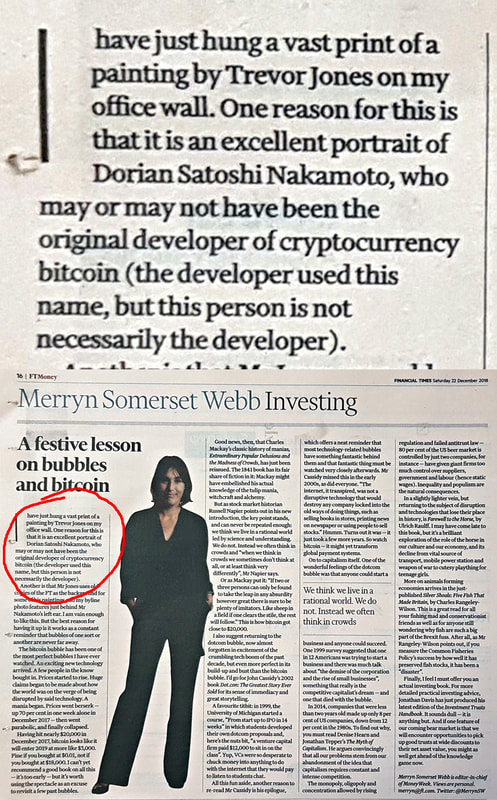
Augmented Reality and the Creative Process
A demo video of the augmented reality features of ‘Satoshi’ and further below a short video showing the creative process involved in the making of these paintings from start to finish.
